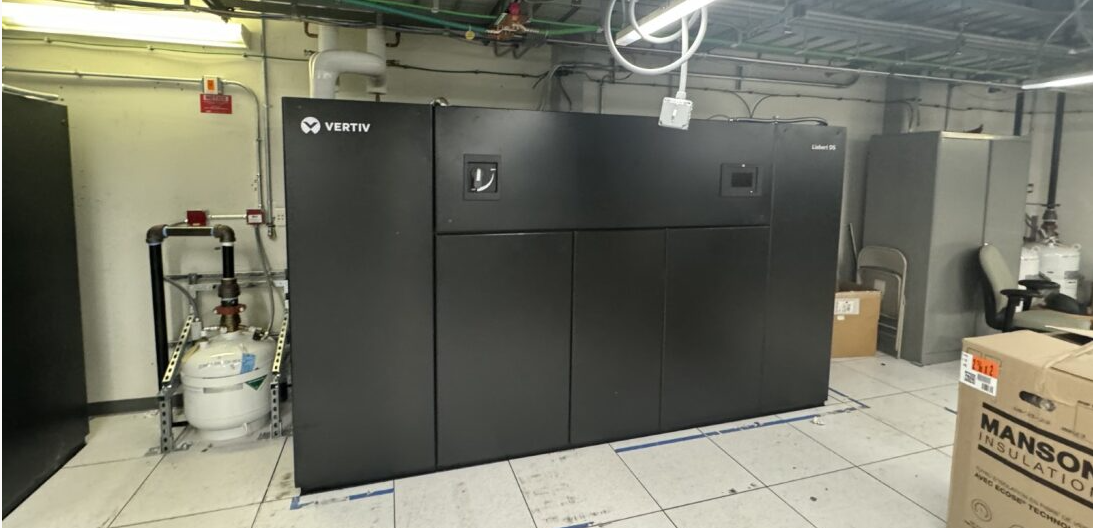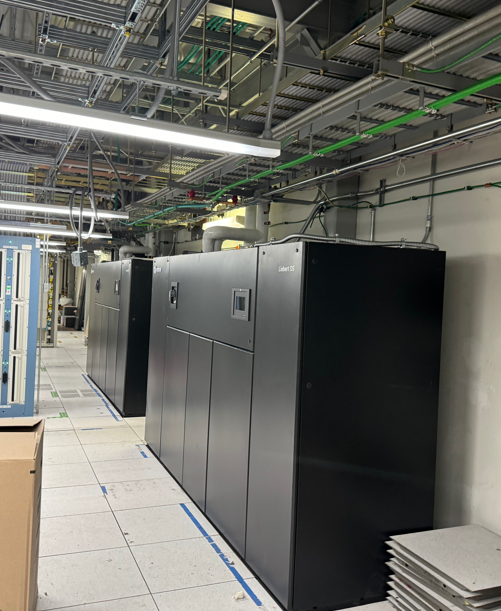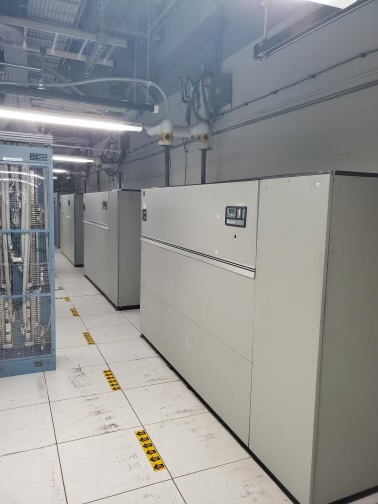
Solutions Brief
A NY Metro Data Center Computer Room Air Conditioning (CRAC) Replacement
Project Overview:
The replacement of legacy Computer Room Air Conditioning (CRAC) units and their associated dry cooler packages are critical steps in updating data center infrastructure. The existing CRAC units, while functional, were outdated and less efficient compared to modern solutions. The new units will provide improved temperature management and energy efficiency, resulting in overall cost savings and a reduced carbon footprint. The dry cooler packages were also upgraded to ensure optimal performance, reliability, and longevity. This process required careful planning and execution to avoid any disruption to ongoing operations.
Overall, this project highlights the importance of effective collaboration and strategic planning in order to achieve a successful outcome. By working closely with all parties involved and prioritizing efficiency and sustainability, ANS was able to modernize the HVAC system without any interruption or negative impact on building operations. So, it is always essential to keep in mind the potential impact on all aspects before making any changes or upgrades to a building's systems. This ensures that not only are the desired improvements achieved, but also the functionality and comfort of the building are maintained throughout the process. It is a delicate balance that requires expertise and attention to detail, qualities that ANS brings to each and every project. With this approach, we were able to deliver high-quality results that meet the needs of both our clients and the buildings they occupy. So, whether it is a complex HVAC upgrade or any other construction project, our team is equipped with the skills and experience to successfully complete it while prioritizing the needs of all stakeholders involved.
Challenge
During this project, ANS faced various obstacles while working towards modernizing the HVAC system. One major challenge was to carry out the upgrades without any negative impact on the building's operations. This required careful planning and consideration of potential disruptions that could arise during the process.
By considering the impact on all aspects of a building's operation, potential disruptions can be minimized, and successful outcomes can be achieved. As the buildings around us continue to age and require updates, it is crucial to approach these changes with careful consideration and planning to ensure a smooth transition for both the building and its occupants.
Solution
Working closely with the HVAC, Electrical, and Building Automation Systems (BAS) subcontractors, ANS navigated the complex task of shutting down, removing, and replacing the antiquated Computer Room Air Conditioning (CRAC) units and their corresponding dry coolers. We replaced them with new, high-efficiency units while meticulously maintaining the building's air conditioning needs. ANS calculated and balanced the building's cooling capacities to ensure that sufficient capacity remained online at all times to meet the structural cooling demands. This strategic approach allowed us to modernize and enhance the system's efficiency without any interruption or detriment to building cooling requirements.
Working with subcontractors and navigating complex tasks are essential skills for any project manager. In this particular case, coordinating the replacement of outdated equipment while ensuring the building's cooling needs were met required careful planning and execution.
In addition to working with subcontractors, ANS also collaborated closely with the building's occupants to minimize any potential disruptions during the process. This included providing clear communication and updates on the progress of the project and addressing any concerns or issues that arose.
Moreover, in today's world where sustainability is a major concern, ANS made sure to prioritize energy efficiency when selecting and installing new units. By using high-efficiency units, we not only improved the building's overall energy consumption but also reduced its carbon footprint.






